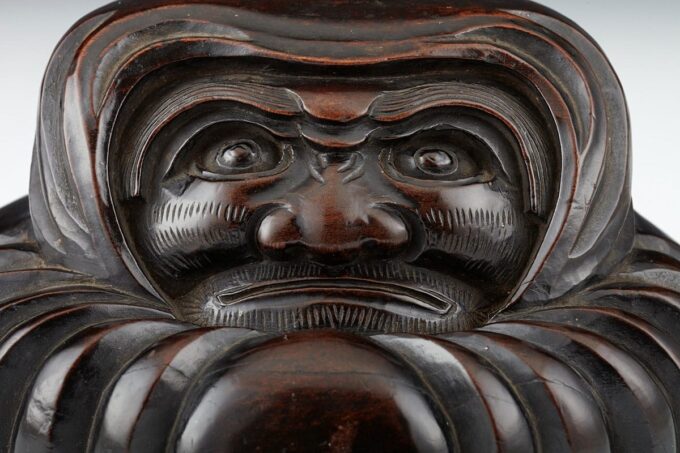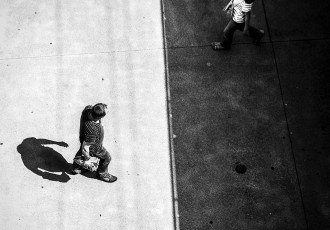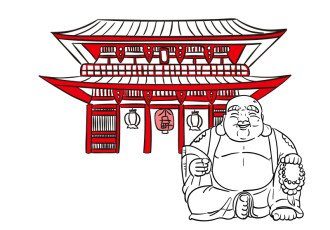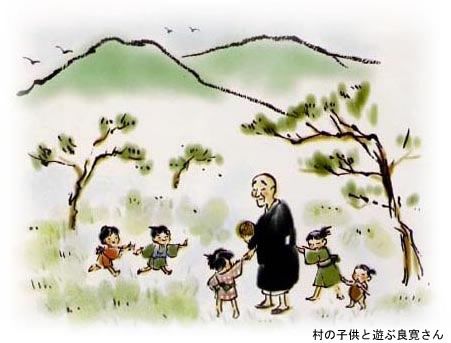The Heian period witnessed a flowering of Buddhist art and architecture. During this time, wood also replaced bronze as the most common material from which Buddhist sculptures were made. The early Heian sculptures were usually carved in the ichiboku-zukuri or single block technique, in which the head and body were one unit. This technique was also used in conjunction with what is termed the yosegi-shiki-ichiboku-zukuri, in which the arms and occasionally a leg or the knees were added to the trunk as separate pieces. All work done on a statue by one sculptor was performed in situ, as the wood required was heavy and not easily transported.
The yosegi-zukuri (multiple-block technique) of creating sculpture did not become popular until the Fujiwara period. Some Japanese sources say the yosegi-zukuri method was introduced in the later half of the 10th century, due primarily to the lack of large trees and a growing creative impulse to create gigantic statues of the Nyorai and Bosatsu. Others say the technique stems from Jocho (994-1057), the great Buddhist sculptor, the regent Fujiwara Yorimichi’s favorite sculptor. Jocho’s new technique provided an innovative approach to seated images which could be applied to the construction of larger standing images as well.
Jocho’s sculptures were made using the newly developed yosegi zukuri technique, in which several rectangular blocks are individually carved and then combined according to certain principles. Jocho’s original principles remain a secret. Figures created in this technique were much lighter than those carved from a single piece of wood, were much less likely to crack, and could also be made in an assembly-line fashion. The development of this technique, which simplified and expedited production, led to the proliferation of Buddhist statues in the late Heian and Kamakura periods.
The new yosegi-zukuri technique reached its apogee with Unkei (1148 – 1223 AD), one of Japan’s most highly acclaimed sculptors. Instead of using one solid piece of wood, Unkei and his team carved the statue in a piecemeal fashion from partially hollow blocks of wood. First, the individual body parts were carved roughly and separately. Second, the pieces were assembled, and only then, thirdly, did detailed carving begin. The new method included the hollowing of the separate components by several artisans. This resulted in the speedier production of a more portable image in a workshop distant from the site
Yosegi is a generic term applied to any manner of assemblage, whether the figure is seated or standing, in which the head is separated from the trunk and then reinserted.
The summary of the method used in this technique:
- Drawings of the image are prepared and presented to the patron, or the patron himself may supply them.
- A schematic drawing is prepared.
- The center log is cut into a rectangular shape.
- The head and body are roughly carved from a center block, and other blocks are joined to it by means of clamps and/or a peg system.
- Depending on which of several approaches is used, the figure is split in two and opened.
- The open halves or sections are hollowed out to a thickness of two or three centimeters.
- The pieces are rejoined permanently and final carving is completed.
- Final modeling and finishing are followed by a coat of lacquer, and coloring and gilding are added.
The advantages of this technique are:
- It provides an efficient use of sometimes scarce materials.
- Inside of the statue can be hollowed easily and efficiently from the joints (”uchiguri”).
- Each piece of wood can be carved by different sculptors, facilitating mass production.
There are five basic ways to combine blocks of wood ”kiyosehou”. Techniques such as ”warihagi”, ”warikubi”, and ”gyokugan” are often used for the statues that employ the yoseki-zukuri technique. Examples of this technique date from as early as the 7 Century, such as, Bosatsu Hanka Shiyuizou at Chuuguuji in Nara.
More complicated variations were introduced until the advent of the “sandwich” technique, more commonly found in dated works of the Kamakura period. The latter period also witnessed a change in the number of pieces used in the construction of a statue. Whereas in the Heian period only a few large blocks were used, so that an arm, for example, would be carved from a single piece, in the Kamakura period appendages were carved in several separate segments and then joined together.
One big advantage of this technique is that the prefabricated nature of the individual body parts allowed temples to quickly repair or replace damaged or destroyed body parts — e.g., placing the undamaged head of an older statue (whose body was ruined by fire or earthquake) onto another statue whose body was still in good repair.
Since the late 11c, as greater numbers of temples and Buddhist statues began to be made, this technique was frequently adopted, especially when large-scale statues were made in Kyoto and other developed regions. In less developed provinces, however, large-scale statues were often made by ichiboku-zukuri, even in the 11c and 12c. Life-size or smaller statues had been made by either yoseki-zukuri, ichiboku-zukuri, or warihagi irrespective of where they were made. Gradually, however, yoseki-zukuri became the prevailing method in any size.
Yoseki-zukuri was not only a technical innovation but also incorporated – in the treatment of Buddhist images’ faces and bodies, the trends and tastes of the times. Jocho’s only remaining work, however, is the image of Amida Nyorai in the Phoenix Hall of Byodoin near Kyoto. The style of Buddhist sculpture for which Jocho was responsible is called the “Jocho style,” and it inspired many Buddhist sculptures produced in Japan in later years.
photo credit: studyblue




